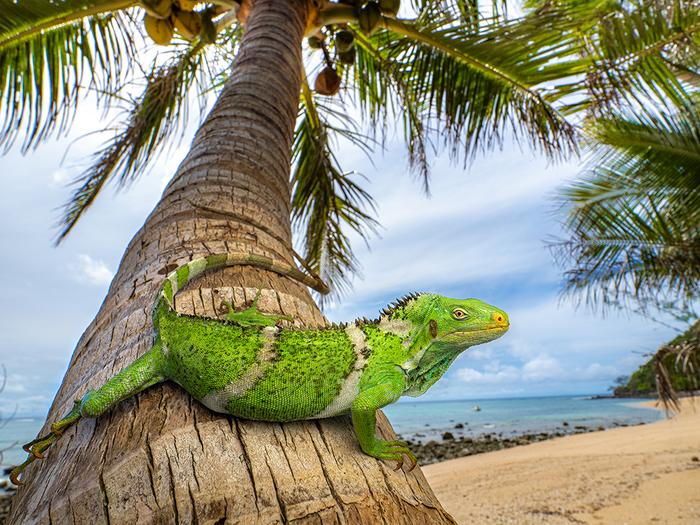A new analysis conducted by biologists at the University of California, Berkeley, and the University of San Francisco have suggests iguanas landed in Fiji after voyaging 5,000 miles (8.046km) from the western coast of North America
The scientists say this is the longest known transoceanic dispersal of any terrestrial vertebrate.
The new analysis, to be published next week in the journal Proceedings of the National Academy of Sciences, suggests that the arrival of the ancestors of the Fiji iguanas took place 34 million ago or more recently.
The findings are based on the timing of the genetic divergence of the Fiji iguanas, Brachylophus, from their closest relatives, the North American desert iguanas, Dipsosaurus.
Previously, biologists had proposed that Fiji iguanas may have descended from an older lineage that was more widespread around the Pacific but has since died out, leaving Brachylophus as the sole iguanids in the western Pacific Ocean.
“We found that the Fiji iguanas are most closely related to the North American desert iguanas, something that hadn’t been figured out before,” said lead author Simon Scarpetta who is a herpetologist and paleontologist and a former postdoctoral fellow at UC Berkeley.
“That they reached Fiji directly from North America seems crazy,” said co-author Jimmy McGuire, UC Berkeley professor of integrative biology and herpetology curator at the Museum of Vertebrate Zoology.
“But alternative models involving colonization from adjacent land areas don’t really work for the time frame, since we know that they arrived in Fiji within the last 34 million years or so.”
“This suggests that as soon as land appeared where Fiji now resides, these iguanas may have colonized it. Regardless of the actual timing of dispersal, the event itself was spectacular.”
The scientists say iguanas are large and herbivorous and used to long periods without food and water.



